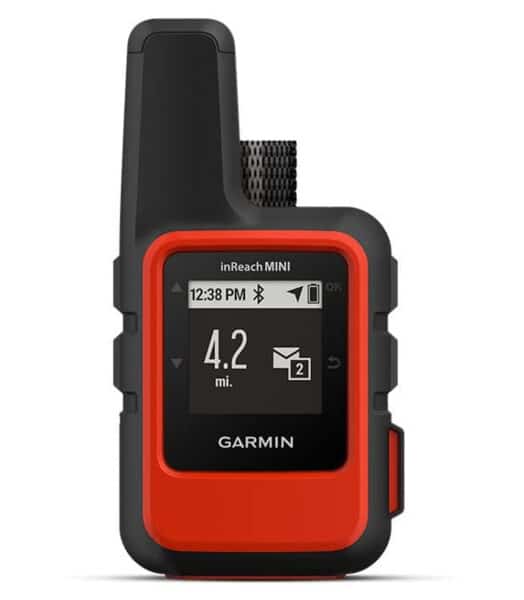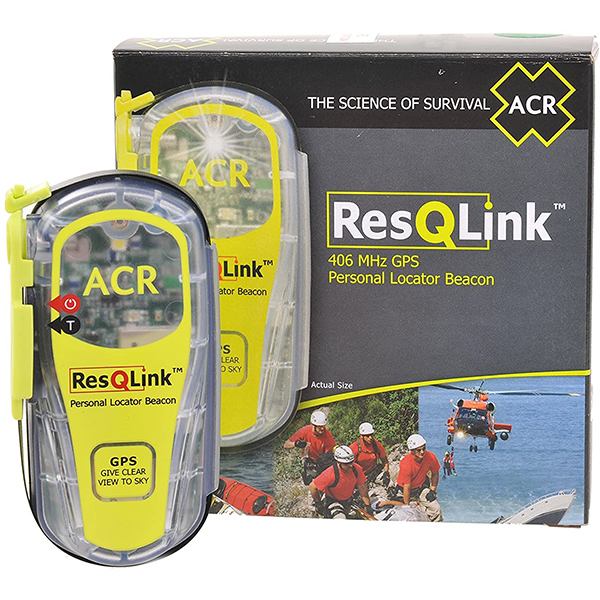When things go wrong on a hike or backpacking trip, they go wrong fast. If you can’t self-rescue and are out of cell phone range, a personal locator beacon may mean the literal difference between life or death. This post is my attempt to convince you that PLB’s are important and that everyone that goes out into the wilds, should have one with them.
Key Highlights
- Personal Locator Beacons (PLBs) are essential safety devices for outdoor adventurers.
- PLBs use satellite networks to send distress signals and GPS coordinates to rescue agencies.
- There are various types of PLBs with different features, so it’s important to choose one that suits your needs.
- Proper registration, maintenance, and understanding of how to use your PLB are crucial.
- When activated, a PLB can significantly increase your chances of a swift rescue in an emergency.
Introduction
Ready to take your adventures off the grid? Exploring remote areas and embracing the unknown can be very exciting. But you must prioritize safety. That’s where a personal locator beacon comes in. This device is your trusty sidekick for peace of mind! Imagine being in the wilderness, knowing you can connect to rescue agencies whenever needed, no matter how far you go. Let’s explore the world of personal locator beacons. We will see how these compact devices can give you an essential layer of safety for your next trip.
A Real Life Example Of Why You Need An “Oh Shit Button”
Before you get too deep into this post, I just wanted to jump in and say that I wrote this post a while back and since then, a missing hiker case has happened that highlights the need for what I call an “Oh Shit Button.” Obviously named because it is the button you hit shortly after saying “oh shit!”
July 31, 2024 Robert Schock took off for a hike in the North Cascades with his dog. A few days later, after he had been reported missing, his car and his dog were found. But Schock was no where to be seen. Several weeks of intensive searching followed with no signs of him. This was looking like a Missing 411 case.
Fast forward to September 2nd, when a Pacific Northwest Trail Association (PNTA) work crew heard a faint call for help. After some searching, they found Robery, very weak and near to death.
Apparently he had been stuck in the spot they found him for over two weeks.
Robert started his hike on a known trail, but wound up spending a full month in the forest with no food and nearly dying. If he had taken even the most simple locator beacon, he would have been found within a day.
Understanding Personal Locator Beacons (PLBs)
Personal locator beacons, or PLBs, are very important for people who love adventure. They use satellite systems to send emergency signals to rescue agencies when you are in remote areas. Devices like the Garmin inReach Mini and ACR ResQLink give you peace of mind. They have features like GPS and SOS buttons for help. It is important to know how long PLBs work and the subscription costs for your outdoor trips. By registering and activating these beacons, you can get fast help from rescue services. This helps keep you safe in emergencies.

What Are Personal Locator Beacons?
A Personal Locator Beacon, or PLB, is a small and portable device. It sends a distress signal to a global satellite network. This network is used for search and rescue. PLBs are different from cell phones. While cell phones depend on local networks with limited coverage, PLBs work on their own. They send a strong signal that can be picked up anywhere in the world.
You can think of a PLB as your emergency beacon when you are in nature. Once you turn it on, the PLB sends a message with your unique ID and current GPS location to satellites. This info is sent to rescue agencies, like the Coast Guard or local search teams. They can then find your location and give you help.
The Importance of PLBs in Outdoor Adventures
Whether you are a skilled mountaineer, a weekend hiker, a kayaker, or just love to explore nature, a PLB can provide great peace of mind. In remote areas where cell phone signals are weak or gone, a PLB can be your lifeline.
Think of it as an insurance policy for when the unexpected happens. If you get hurt, lose your way, or face a serious situation in the wild, a PLB can help get you to safety. These devices are built to endure tough conditions and are made to work well when you need them the most.
How Do Personal Locator Beacons Work?
Have you ever thought about how this small device can link you to the world even when you are far away? The key is its skill to talk to satellites that circle the Earth. These satellites work as relays. They pick up the PLB’s strong distress signal and send it to ground stations that are part of rescue networks.
The Technology Behind PLBs
PLBs use satellite technology to help in emergencies. They send out a special signal on a frequency of 406 MHz, which is known around the world for search and rescue. This signal works well because it travels far and can get past barriers, even from remote places.
In the United States, the National Oceanic and Atmospheric Administration (NOAA) runs a network of satellites. These satellites are always on the lookout for distress signals. When a signal is found, it starts a process to inform rescue agencies near your location.
The Process from Activation to Rescue
Activating your personal locator beacon is easy. Just turn it on and press the SOS button until you get confirmation. After you activate it, the device sends out a distress signal. This signal includes your GPS location and goes to the satellite network. It’s similar to an SOS call that travels through space!
Rescue services get this signal. They can find out where you are and will send a local search and rescue team to help you. The time for the rescue team to reach you can change. It depends on things like the weather, the ground, and how close you are to the nearest rescue base. However, when you activate your PLB, a rescue effort begins right away.

Types of Personal Locator Beacons
Not all Personal Locator Beacons (PLBs) are the same. Some are simple and only send SOS signals, while others are more advanced and include GPS navigation and texting features. You can find a PLB that fits your needs and budget. Think about what features matter most to you. Also, consider the places you will be exploring and any extra functions you might want before you choose.
Features to Consider When Choosing a PLB
Navigating PLBs and satellite messengers can feel like picking a new smartphone. All of them have different functions. It is up to you to choose the features that fit your needs best.
- GPS Accuracy: Look for a PLB with a high-sensitivity GPS receiver. It will help you track your location precisely.
- Battery Life: Choose a device that has a long battery life. You could also bring spare batteries for longer trips.
- Subscription Fees: Be aware of any subscription fees tied to some PLB models or satellite messengers.
- Additional Features: Some PLBs have extra options, like SOS confirmation, two-way messaging (like the ACR ResQLink), or can work with other devices.
- Ease of Use: Pick a PLB that is simple to use. This is important, especially in stressful times. Make sure you are familiar with how it works before you head out.
Comparison of Popular PLB Models
Here’s a quick rundown of popular PLB models to give you an idea of the different features and rough price points:
| Model | Type | Price | Features |
| ACR ResQLink View | PLB | $329.95 | GPS location, 406 MHz signal, strobe light |
| Garmin inReach Mini 2 | Satellite Messenger | $399.99 | GPS, two-way text messaging, SOS, tracking |
| Garmin inReach Messenger | Satellite Messenger | $299.99 | GPS, app-based two-way texting, SOS, tracking |
As you can see, satellite messengers, while more expensive, offer additional features, including two-way messaging (which should not be relied upon for real emergencies).
Beginner’s Guide to Using Personal Locator Beacons
A PLB works well only if you know how to use it! Before you go on your next adventure, get to know your device. First, read the user manual carefully to understand how to operate your PLB. Practice turning on the device in a safe place. Make sure you know how to send a distress signal.
Essential Equipment for PLB Users
A personal locator beacon is a strong safety tool. It works best when you use it with other important gear. First, always have a good GPS device, or a map and compass for navigation. You should also know how to use these tools well!
Next, make sure your PLB is always attached to you. You can clip it on your backpack strap, life jacket, or belt loop. Don’t leave it in your pack or car. In an emergency, you need to reach it quickly! Finally, let someone know your itinerary. Share where you are going, when you will come back, and any other routes you may take.
Pre-Trip Preparation with Your PLB
Before you go on your outdoor adventures, there are some important steps to take. First, check the battery life of your PLB. If the battery is low, charge it or get it replaced. Second, get to know the features and how to activate your PLB model. Reading the user manual can help you understand how to use it better. This can be the key to a quick rescue without any delays.
Lastly, make sure your PLB is safely attached to you or your gear. This simple check will keep it close at hand during an emergency.
Step 1: Registering Your PLB
Registering your PLB may seem like an extra task after getting used to your device. But this step is very important for a fast and effective rescue if you ever need help. When you register, you connect your personal locator beacon’s special ID number to your personal details. This includes your emergency contacts and any medical issues you may have.
So, why is registration needed? It gives rescue agencies key information about you, making rescue efforts quicker. With your details linked to your beacon, rescue groups can easily confirm who you are. They can contact your emergency contacts and get any important medical info. This can really make a difference in urgent situations.
Step 2: Performing a Safety Check Before Departure
Imagine being stuck in the wild with a dead PLB battery. No adventurer wants that! So before each trip, make it a habit to check your PLB for safety.
First, look over your device for any damage. Make sure the antenna is okay and check for any cracks or leaks in the casing.
Next, check the battery life. Many PLBs and satellite messengers have a test feature. This lets you see that the battery is charged and the signal is working right.
By adding these easy checks to your pre-trip routine, you can go on your adventures knowing your PLB is working well.
Step 3: How to Properly Activate Your PLB in an Emergency
Activating your personal locator beacon shows that you need help. So, it’s very important to know how to do this correctly. Each model may have slight differences, but the main ideas are the same.
First, make sure your PLB is turned on and the antenna is fully extended. Next, find the SOS button. This button usually has a cover to prevent you from accidentally turning it on. Once you find it, press and hold the SOS button for the time mentioned in your device’s guide. It’s also good to know what happens when you activate a PLB. This isn’t the same as calling 911, where you can talk to someone right away. Depending on where you are and the network your personal locator beacon uses, it might take a little time for a satellite to respond.
Step 4: What to Do After Activation
Once you turn on your PLB, stay calm and patient. The signal is sent, and rescue teams will get ready to help you. If you can, stay in an open place where you can see the sky. This will help the signal get through better. If you have a signal mirror or whistle, use them to get attention, but save your energy, especially if the weather is bad.
Remember, after you press the SOS button, do not turn it off. It might be tempting to turn it off when you get an alert that help is coming. Keep it on! This lets rescue teams track your location and may help them rescue you faster.
Maintaining Your Personal Locator Beacon
A little care can make a big difference in how your PLB works when you really need it! Just like other important outdoor equipment, your personal locator beacon needs some basic attention to work well. Taking care of it regularly helps it last longer and makes sure it’s ready to help when time is so important.
Regular Maintenance Tips
Maintaining your PLB is easy and does not need special skills. You just need a few simple habits. After each trip, clean your PLB gently. Remove any dirt, debris, or moisture from your adventures. Store your PLB in a cool, dry place. Keep it away from direct sunlight and extreme temperatures when it is not being used. This will help the battery last longer and protect the internal parts of the device.
Also, get to know the maintenance schedule recommended by your PLB’s manufacturer. This might include things like self-tests, software updates for satellite messengers, or sending the unit to a professional for servicing.
Battery Life and Replacement
Battery life matters a lot for any electronic device. It is especially important for a tool that can save your life. Luckily, most personal locator beacons (PLBs) are built to use little power. They usually last about five to seven years. You should regularly check your PLB’s battery life before you go on your trip.
The way you change the battery depends on the brand and model of your PLB. While you may be able to change an aging battery yourself, this is one time to let a trained professional do the battery swap and test that your personal locator beacon is working correctly. Getting stuck somewhere because you had to save a few dollars just doesn’t make sense.
Conclusion
In the world of outdoor fun, a Personal Locator Beacon (PLB) is an important safety tool. These devices can be lifesavers in emergencies. They make sure that help is never far away. It is key to understand how PLBs work. You also need to pick the right one for your needs. From preparing for your trip to knowing what to do after you activate it, each step counts. Regular checks and maintenance of the battery are important for the PLB’s functionality. Always remember, in nature, your safety comes first. A PLB will be your trusted beacon. Stay safe and prepared, and enjoy your adventures with peace of mind!
Frequently Asked Questions
How long does the battery last on a PLB?
The battery life of a PLB can change based on the model and how you use it. Most personal locator beacons work for about 5 to 7 years. It is important to check the battery and replace it as the manufacturer suggests. This will help make sure the PLB works well when you need it in a distress situation.
Can I use my PLB for multiple trips?
Sure! A PLB can be used in many ways and can join you on many adventures. Just remember to check it regularly, like checking the battery. Also, know about any subscription fees connected to some models.
Is it mandatory to register my PLB?
Registering your PLB (Personal Locator Beacon) is not always a legal requirement, but it is very important. When you register, rescue services get important details about you. This helps them respond quicker and better during an emergency.








